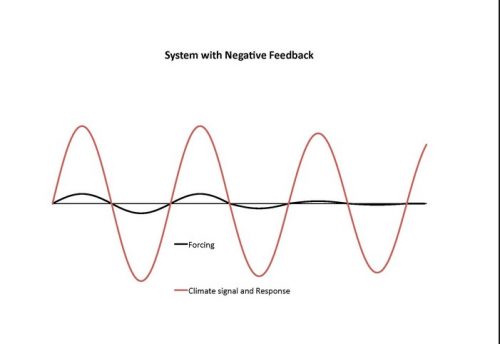
The basis for palaeoclimatic interpretations of variations in the stable isotope content of water molecules is that the vapour pressure of H216O is higher than that of H218O. Evaporation from a water body thus results in a vapour which is poorer in 18O than the initial water; conversely, the remaining water is enriched in 18O. During condensation, the lower vapour pressure of the H218O ensures that it passes more readily into the liquid state than water vapour made up of the lighter oxygen isotope (Dansgaard, 1961). During the poleward transportation of water vapour, such isotope fractionation continues this preferential removal of the heavier isotope, leaving the water vapour increasingly depleted in H218O. Because condensation is the result of cooling, the greater the fall in temperature, the lower the heavy isotope concentration will be. Isotope concentration in the condensate can thus be considered as a function of the temperature at which condensation occurs. Water from polar snow will thus be found to be most depleted in H218O.
content of water molecules is that the vapour pressure of H216O is higher than that of H218O. Evaporation from a water body thus results in a vapour which is poorer in 18O than the initial water; conversely, the remaining water is enriched in 18O. During condensation, the lower vapour pressure of the H218O ensures that it passes more readily into the liquid state than water vapour made up of the lighter oxygen isotope (Dansgaard, 1961). During the poleward transportation of water vapour, such isotope fractionation continues this preferential removal of the heavier isotope, leaving the water vapour increasingly depleted in H218O. Because condensation is the result of cooling, the greater the fall in temperature, the lower the heavy isotope concentration will be. Isotope concentration in the condensate can thus be considered as a function of the temperature at which condensation occurs. Water from polar snow will thus be found to be most depleted in H218O.
This temperature dependency allows the oxygen isotope content of a ice core to provide a proxy climate record. The relative proportions of 16O and 18O in an ice core are expressed in terms of departures, 18O, from the Standard Mean Ocean Water (SMOW) standard (Craig, 1961), such that:
18O = (18O/16O)sample – (18O/16O)SMOW x 103
(18O/16O)SMOW
[Equation 12]
All measurements are made using a mass spectrometer and results are normally accurate to within 0.1 (parts per mille). A 18O value of -10 indicates a sample with an 18O/16O ratio 1% or 10 less than SMOW. For most palaeoclimate reconstructions, typical values for 18O obtained from ice cores range between -10 and -60 (Morgan, 1982).
Similar palaeoclimatic studies can be carried out using isotopes of hydrogen (1H and 2H (Deuterium)), but these are rarer in nature and the laboratory techniques involved are more complex.




Leave a Reply